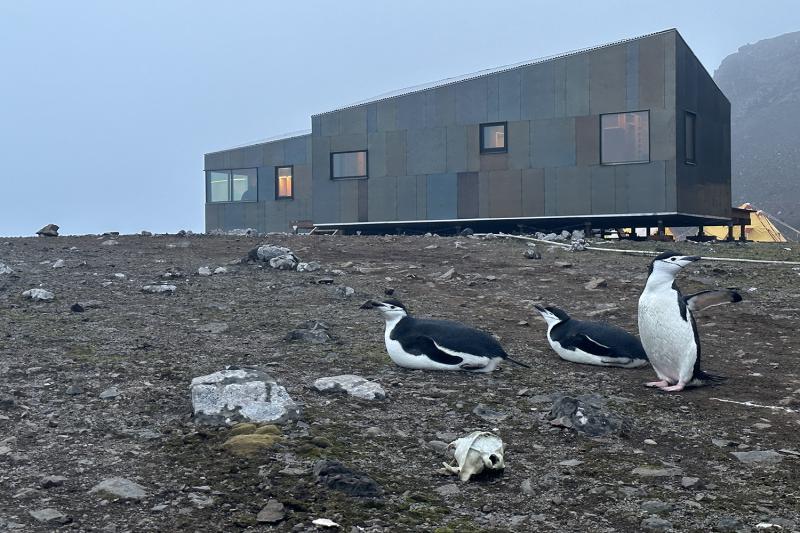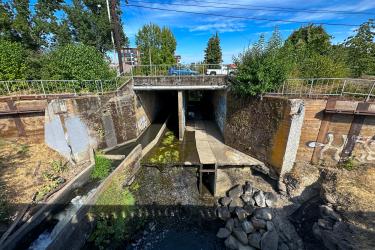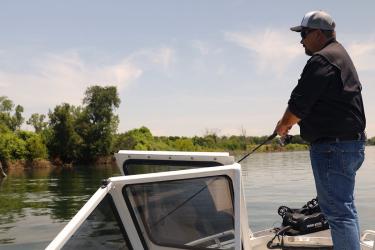Rebuilding the Field Camp
In early 2024, scientists from the U.S. Antarctic Marine Living Resources Program and a team of builders from Bespoke Project Solutions will reconvene on Livingston Island, Antarctica. Their goal: to finish rebuilding the program’s field camp at Cape Shirreff, the culmination of the 3-year project. The current camp had become uninhabitable after almost three decades of weathering harsh Antarctic conditions.
In early 2023, the team installed two of the four new structures—the galley and the bunk house. During the upcoming season, we will complete the final details of those structures and install the two remaining structures—the laboratory and the emergency shelter. In compliance with environmental policies for construction in Antarctica, we will dismantle the old camp structures and remove them completely from the island. We will take care to limit the disturbance to the surrounding ecosystem.
“I'm very excited about the new camp,” said Jefferson Hinke, Head of Seabird Studies for the U.S. Antarctic Marine Living Resources Program. “Beyond just a new, cleaner, and drier replacement with purposefully designed spaces, our new field camp is a beautiful gem in the wilderness! It's going to be a comfortable home during our long field seasons in Antarctica.”
U.S. AMLR Program scientists look back on 26 years at the original camp
The new camp structures were designed by Bespoke Project Solutions and students of the Colorado Building Workshop at the University of Colorado Denver. They worked closely with program scientists who have spent multiple summers—December through February—at Cape Shirreff. The new structures were built using sustainable materials and designed to blend into the Antarctic landscape. They were prefabricated in Denver during 2022 and 2023, dismantled into flat panels, and shipped to southern Chile before being transported to Antarctica.
The original Cape Shirreff field camp was built in 1996 and houses as many as six scientists for 3 to 5 months each year. The original structures—constructed from wood—have been plagued by mold since they were built. They required extensive maintenance each season, cutting into valuable time to conduct science. The new camp will provide safe, dry accommodations for scientists working in the extreme Antarctic climate. It will allow them to focus on NOAA’s mission of providing sound scientific advice for managing Antarctica’s marine life.
Science in Antarctica
For more than 30 years, our scientists have monitored the Antarctic Peninsula ecosystem through land-based and oceanographic research programs. The land-based program studies the annual reproductive success and population trends of seals and seabirds that breed on Antarctica’s South Shetland Islands. The oceanographic program uses autonomous underwater gliders to estimate the amount of krill around the islands each year. Krill are the primary food source for seals and seabirds during the breeding season. The Commission for the Conservation of Antarctic Marine Living Resources is the international organization that regulates fishing in Antarctica. It uses these data to set annual catch limits for the krill fishery that are intended to leave enough krill around the islands for the animals that feed on them to survive.



